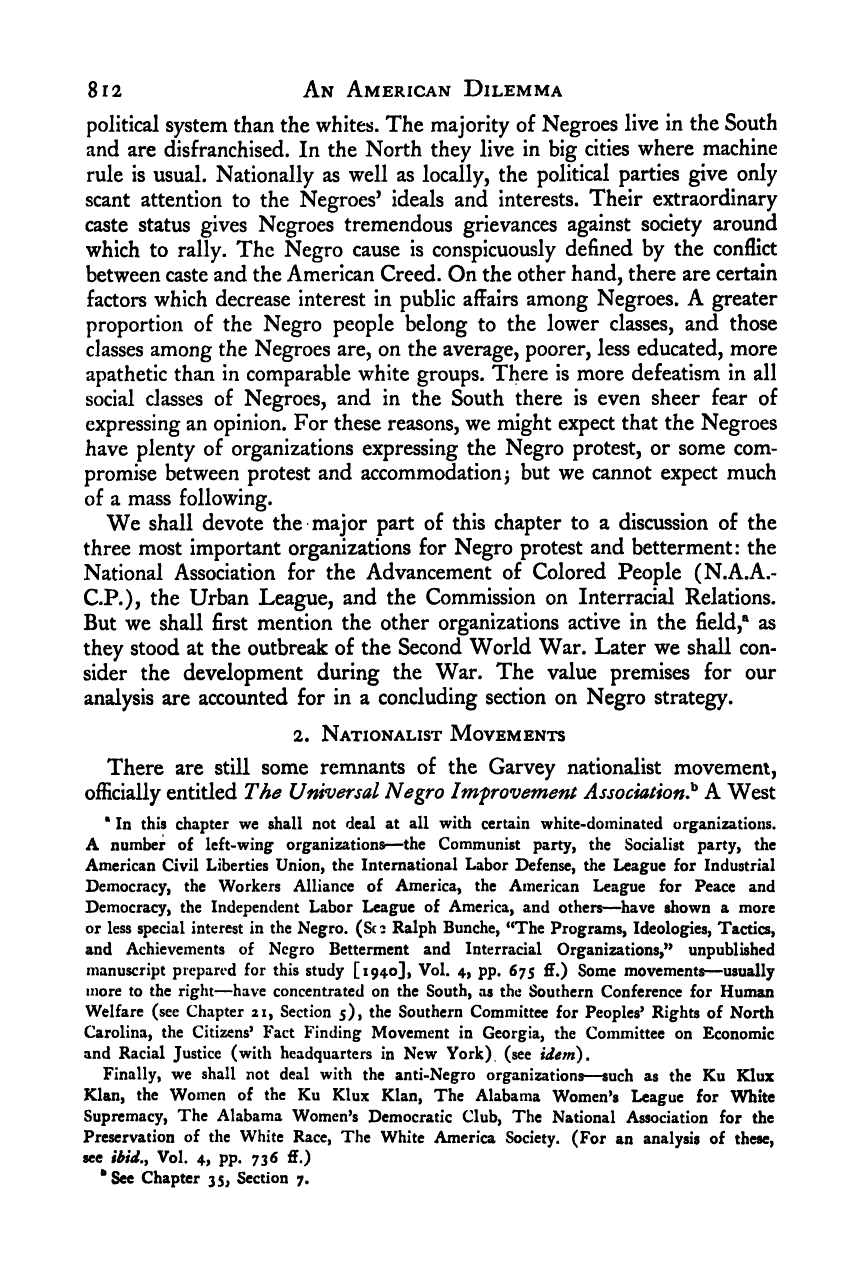Note: Gunnar Myrdal died in 1987, less than 70 years ago. Therefore, this work is protected by copyright, restricting your legal rights to reproduce it. However, you are welcome to view it on screen, as you do now. Read more about copyright.
Full resolution (TIFF) - On this page / på denna sida - IX. Leadership and Concerted Action - 39. Negro Improvement and Protest Organizations - 1. A General American Pattern - 2. Nationalist Movements

<< prev. page << föreg. sida << >> nästa sida >> next page >>
Below is the raw OCR text
from the above scanned image.
Do you see an error? Proofread the page now!
Här nedan syns maskintolkade texten från faksimilbilden ovan.
Ser du något fel? Korrekturläs sidan nu!
This page has never been proofread. / Denna sida har aldrig korrekturlästs.
8 12 An American Dilemma
political system than the whites. The majority of Negroes live in the South
and are disfranchised. In the North they live in big cities where machine
rule is usual. Nationally as well as locally, the political parties give only
scant attention to the Negroes’ ideals and interests. Their extraordinary
caste status gives Negroes tremendous grievances against society around
which to rally. The Negro cause is conspicuously defined by the conflict
between caste and the American Creed. On the other hand, there are certain
factors which decrease interest in public affairs among Negroes. A greater
proportion of the Negro people belong to the lower classes, and those
classes among the Negroes are, on the average, poorer, less educated, more
apathetic than in comparable white groups. There is more defeatism in all
social classes of Negroes, and in the South there is even sheer fear of
expressing an opinion. For these reasons, we might expect that the Negroes
have plenty of organizations expressing the Negro protest, or some com-
promise between protest and accommodation 3
but we cannot expect much
of a mass following.
We shall devote the major part of this chapter to a discussion of the
three most important organizations for Negro protest and betterment: the
National Association for the Advancement of Colored People (N.A.A.-
C.P.), the Urban League, and the Commission on Interracial Relations.
But we shall first mention the other organizations active in the field,’’ as
they stood at the outbreak of the Second World War. Later we shall con-
sider the development during the War. The value premises for our
analysis are accounted for in a concluding section on Negro strategy.
2. Nationalist Movements
There are still some remnants of the Garvey nationalist movement,
officially entitled The Universal Negro Imfrovemem Association}^ A West
<< prev. page << föreg. sida << >> nästa sida >> next page >>